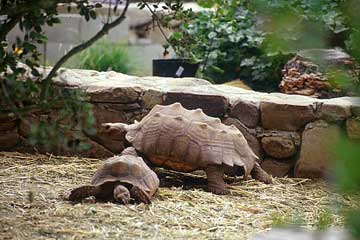
![]() UNDERSTANDING
REPTILE LIGHTING SYSTEMS
UNDERSTANDING
REPTILE LIGHTING SYSTEMS

A C Highfield

Above: Metabolic bone
disease is revealed by the spinal region depression
visible on this Geochelone sulcata (African
Spurred tortoise). MBD is typically caused by lack of
exposure to UV-B as well as by dietary factors.
SEE NEW UPDATED ARTICLES ON THIS TOPIC ON THE NEW WEBSITE
WWW.TORTOISETRUST.COM
Resources:
Excellent detailed discussion of
every aspect of UV and reptiles, including tests,
behaviour studies, and biology.
EFFECT
OF BASKING LAMPS ON HEALTH
New research from the Tortoise
Trust exposing the health risks caused by artificial
heating sources.
OUTDOOR
TERRARIUM WITH NATURAL UVB - REDUCE RELIANCE ON
BASKING LAMPS!
New practical designs that can
reduce reliance on artificial heat and light and can
greatly reduce energy use and costs.
ŠA. C. Highfield 1998-2002 (Updated May 2015)